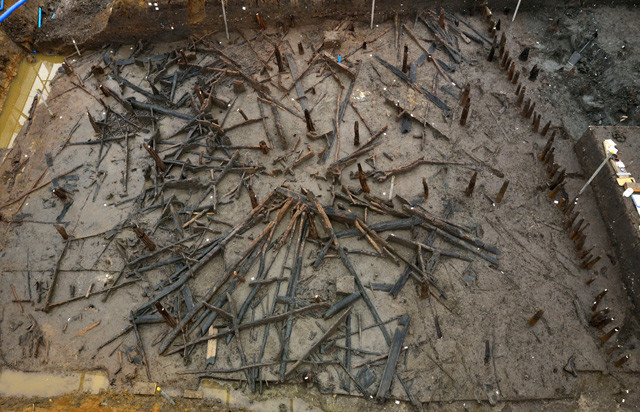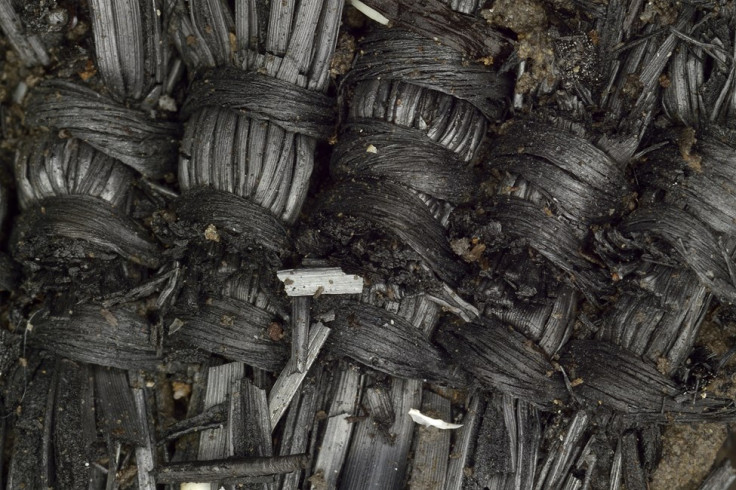Archaeologists uncover 'best preserved' Bronze Age houses in Cambridgeshire

An archaeological dig in Cambridgeshire has unearthed the "best preserved Bronze Age dwellings ever found in Britain", experts say. Large circular wooden houses built on stilts above water, dating between 1200-800 BC, were uncovered at Must Farm quarry in Whittlesey, East Anglia.
The roof of one of the round houses was charred, suggesting a fire forced the inhabitants out of the settlement to leave their belongings behind in haste. The hamlet is then thought to have collapsed into the water below before being buried in silt.
Archaeologists say the find is unique due to the near-perfect preservation of organic material such as wood and textile. Pots with meals inside and finely woven clothing were found, as well as "exotic" glass beads from a necklace, hinting at a sophistication not usually associated with the Bronze Age.
'International significance'
Historic England, which is funding the £1.1m ($1.6m) four-year excavation project along with land conservation group Forterra, said that the finding sheds new light on the day-to-day lives of our Bronze Age ancestors.
"A dramatic fire 3,000 years ago combined with subsequent waterlogged preservation has left to us a frozen moment in time, which gives us a graphic picture of life in the Bronze Age," said Duncan Wilson, chief executive of Historic England.
"We are learning more about the food our ancestors ate, and the pottery they used to cook and serve it. We can also get an idea of how different rooms were used. This site is of international significance and its excavation really will transform our understanding of the period," he added.

Textiles made from plant fibres such as lime tree bark, small cups, bowls and jars were among the intact items unearthed from the settlement. The wooden houses were so well preserved that footprints of those that once resided in them were also discovered.
David Gibson, archaeological manager at the Cambridge Archaeological Unit, which is leading the excavation, said: "Usually at a Later Bronze Age period site you get pits, post-holes and maybe one or two really exciting metal finds. But this time so much more has been preserved – we can actually see everyday life during the Bronze Age in the round.
"It's prehistoric archaeology in 3D with an unsurpassed finds assemblage both in terms of range and quantity."
'Thriving community'
The four-year excavation project at the 1,100sq m site is at its halfway stage, with the finds suggesting there is much more to be discovered in the rest of the settlement.
"Must Farm is the first large-scale investigation of the deeply buried sediments of the [East Anglian] fens and we uncover the perfectly preserved remains of prehistoric settlement," said Mark Knight, site director of the excavation.
"Everything suggests the site is not a one-off but in fact presents a template of an undiscovered community that thrived 3,000 years ago 'beneath' Britain's largest wetland," he added.
© Copyright IBTimes 2025. All rights reserved.






















